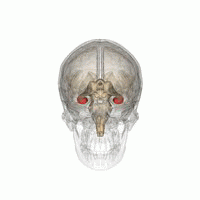
Photo from wikipedia
Abstract The aim of this study was to quantify 1647 aversion training sessions involving 1156 dogs conducted between 1998 and 2007 at Coromandel sites (North Island, New Zealand). The effects… Click to show full abstract
Abstract The aim of this study was to quantify 1647 aversion training sessions involving 1156 dogs conducted between 1998 and 2007 at Coromandel sites (North Island, New Zealand). The effects of gender, age, social group size, function of dog, breed, number of training sessions and responses to training were explored for evidence of learning differences. The behaviour of dogs presented for up to five further training sessions was analysed for change with repeated exposure. The effect of one-, two- or three-year gaps between training sessions was also investigated. All 1156 dogs displayed avoidance to the training stimuli after the first training session. When presented with the training stimuli at the second training session, 69% of the dogs displayed avoidance, 88% did so at their third training session, 86% at the fourth session and 100% at their fifth session. Where avoidance was not displayed at a repeated training session, the dog underwent aversion training again. Lower levels of avoidance to the training stimuli were seen in older dogs being trained for the first time, dogs from single-dog households, dogs used to hunt pigs, non-sporting breed dogs and dogs that have a three-year gap or longer between sessions. While the majority of dogs avoided the kiwi training stimuli, it is recommended that the ecological translation of the training stimuli be investigated.
Journal Title: Applied Animal Behaviour Science
Year Published: 2017
Link to full text (if available)
Share on Social Media: Sign Up to like & get
recommendations!